
The best place to start an exploration tour is at the Haus der Musik. The reflection of the modern glass façade on the north side captures everything that makes Innsbruck what it is: the old town bears witness to the city's medieval history, the Hofkirche to its Renaissance splendour, the Hofburg to its Baroque splendour and the Nordkette mountain range towering above everything in the background to its closeness to nature and sporting activities.
An impressive panoramic view opens up from the roof terrace: To the south you can see the Jesuit Church, the traditional Academic Grammar School (founded by the Jesuits as a Latin school in 1562), the local mountain Patscherkofel and the Bergisel with its ski jump. The Stubai Alps rise up behind them. To the north-west, the view sweeps over the old town to the popular hiking destination of Hafelekar and on to the Hötting district. The centuries-old saying "Hötting is a kingdom and all around it lies Austria" becomes clear.
Diagonally opposite the Haus der Musik is the Hofkirche. It houses the impressive ceremonial tomb (but not the mortal remains) of Emperor Maximilian I, which is guarded by 28 life-size bronze figures (the "Schwarzmandern"). The Tyrolean freedom fighter Andreas Hofer is buried in the left aisle of the Hofkirche.
The archway at the Hofkirche leads to Franziskanerplatz. On Saturdays, flea markets and flea markets invite you to browse, and in summer there are several ice cream parlours. Il Convento (12 Gault-Millau points) is the place to go for fine Italian food. Right behind it is the Lechle-Haus, one of the oldest buildings in the city centre, where parts of the old city wall and a wooden ceiling from the 13th century were uncovered during renovation work.
Anyone strolling from the Burggraben into the Old Town should take a short detour through Schlossergasse to Café Munding. Family-owned since 1803, the oldest coffee house in the city not only invites you to enjoy coffee and cake, but also to make little discoveries: One display case contains Innsbruck's first mechanical dough mixer (imported directly from America in 1850), while the coffee still comes from a legendary Faema machine (purchased in 1964 for the Winter Olympics). On the façade, the 1529 Mariahilf painting by Lucas Cranach the Elder overlooks the square. Although it is only a copy, it is well worth a look, as the original is only on display in Innsbruck Cathedral during Lent and Advent.
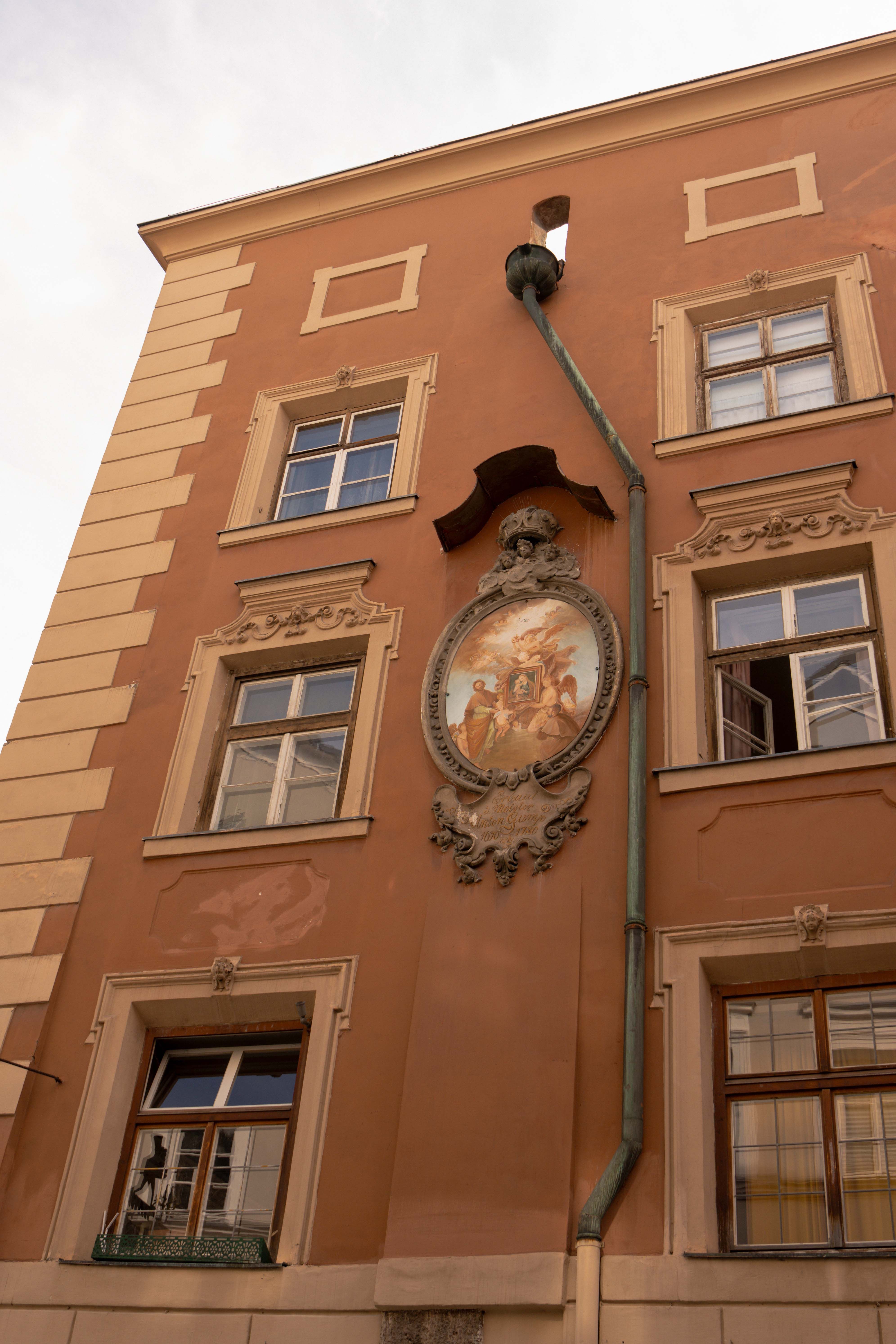
Kiebachgasse 10 is home to one of the most beautiful courtyards in the city. It is not open to the public, but can be spotted from the farthest table of the Weißes Rössl parlour. Some scenes from the 2002 film "The Freedom of the Eagle" with Tobias Moretti in the role of Andreas Hofer were shot here. The late Gothic building dates back to the late 13th century. In the 18th century, the rooms were used as classrooms for the Theresian Normal School.

Where Kiebachgasse and Seilergasse intersect, you will find the so-called "Vier-Viecher-Eck". In the Middle Ages, cattle traders used to bustle here. For centuries, inns with animal names invited guests to dine at this corner. From the quartet Goldener Löwe, Goldener Hirsch, Roter Adler and White Horse Inn however, only the latter still exists, which, alongside the poacher in Seilergasse 5 offers hearty regional specialities for all times of day. Up until the 1960s, the "Vier-Viecher-Eck" was still used as a centre for the Sellrain laundresses, who took care of the dirty laundry of the Innsbruck population.
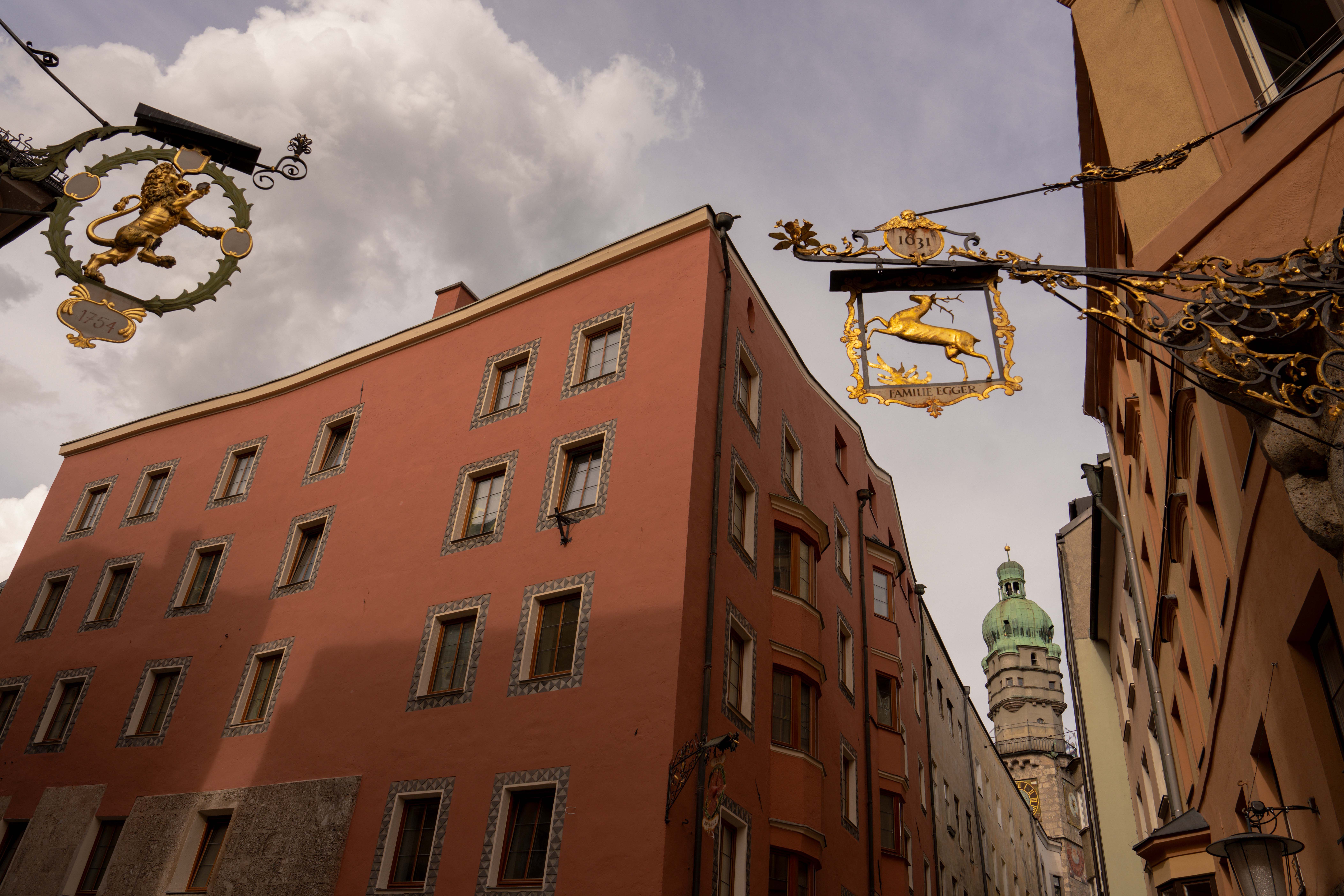
At the end of Kiebachgasse stands the historic Hotel Goldener Adler. It was here that Andreas Hofer gave one of his legendary speeches on 15 August 1809 in front of a crowd of national defenders. An excerpt from this speech can be read in the stone set into the arbour opposite the hotel entrance. But Andreas Hofer was not the only prominent guest that the hotel has hosted since 1390. Personalities such as Goethe, Mozart and Jean-Paul Sartre have also stayed here.
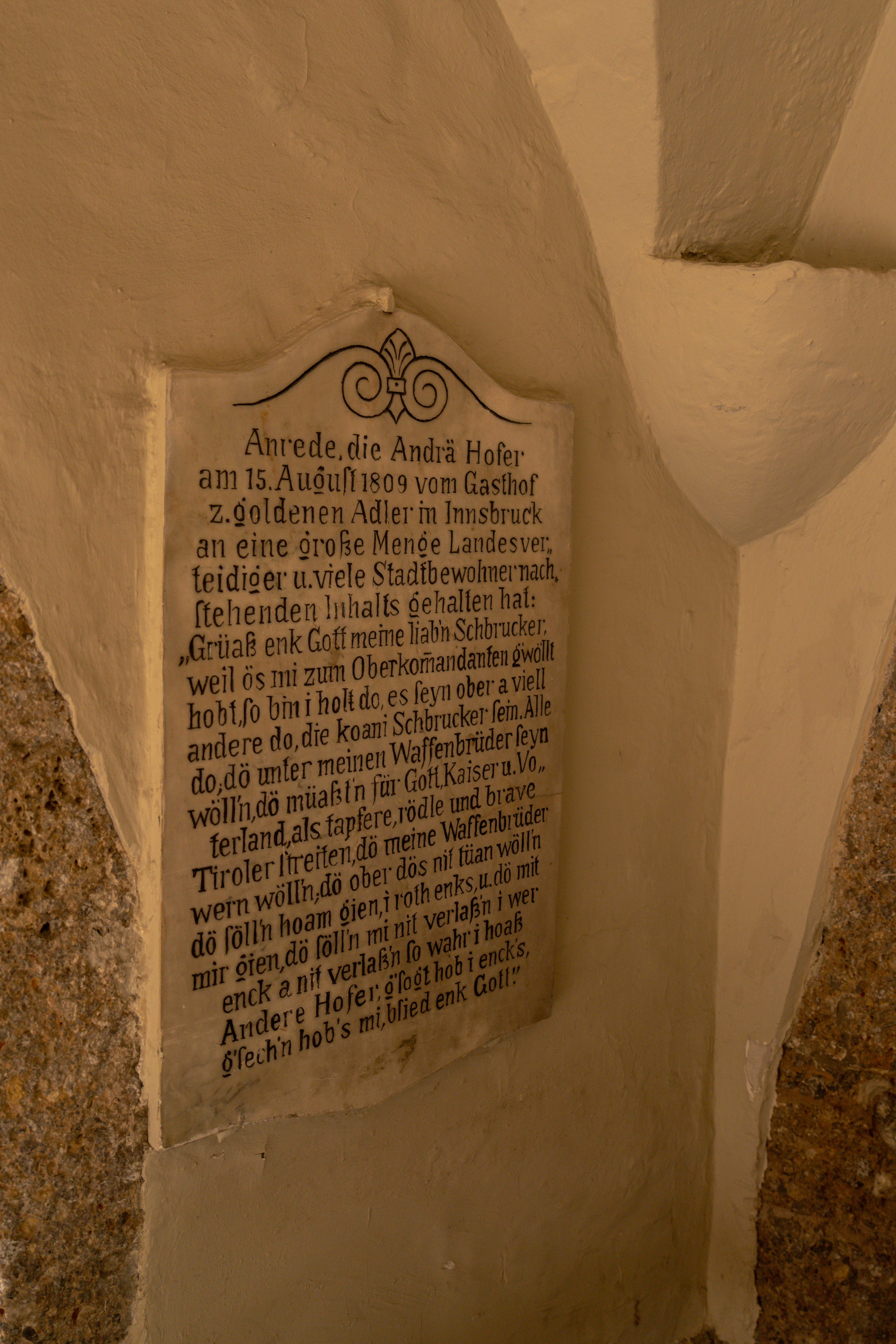
The Ottoburg, the original residence of the Counts of Andechs and one of the oldest buildings in the city, sits diagonally opposite the hotel between the Inn and the Golden Roof. Five originally preserved parlours invite you to dine in a historic atmosphere.
The jewel of the old town is the Golden Roof with its 2,657 fire-gilded copper shingles. Emperor Maximilian had the copper delivered from the Schwaz silver and copper mine. However, nobody knows exactly how many kilograms of gold are actually on the roof of the oriel. The first recorded theft of shingles took place in 1750, followed by similar incidents in 1998 and 2007. In 2012, seven shingles were stolen during renovation work, but in the end they all found their way back onto the roof. The 'honest thieves' remain unknown to this day.
Around the Golden Roof and the Museum of Emperor Maximilian housed inside, attentive observers will recognise some of the alleyways from the German-Austrian Netflix series "Totenfrau" (Dead Woman) based on the bestseller by Tyrolean author Bernhard Aichner. The bevelled stone earthquake support pillars are also visible on many of the house facades in the alleyways. These were added to the buildings in the late 1770s after the earth shook over 100 times in one year alone.
The cathedral square opens up behind the Golden Roof. As the only enclosed square in the city, it offers historical flair with a view of St Jakob's Cathedral and the house of court composer Marc Antonio Cesti. A section of a Ritsche (medieval canal system), which was found during paving work, is currently on display in front of the square. The cathedral square is best enjoyed on the benches under the trees. Alternatively, the bar Fox and Hare in the antique vault invites you to enjoy creative drinks and natural wines.
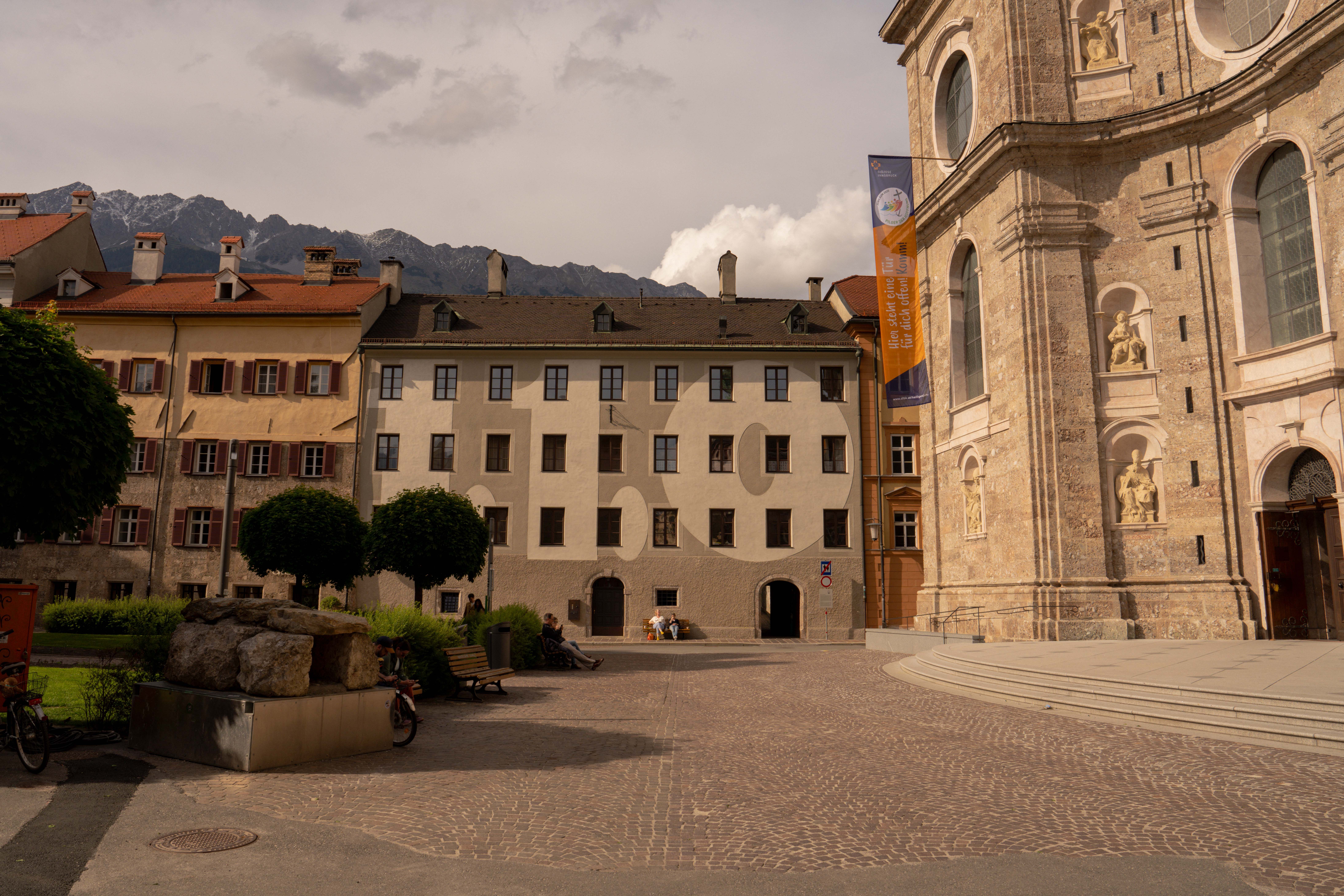
In the neighbouring Hofgasse, the so-called Giant's House (number 12) is a curious gem. Built in 1480 for the 2.20 metre tall castle giant Nikolaus Haidl, it is now famous for its whispering arch: two curved stone channels to the right and left of the door transmit whispered messages from one side of the arch to the other. It is said that the wishes whispered into the arch actually come true...
After our walk from the Haus der Musik via Franziskanerplatz to the Riesenhaus, we arrive back not far from our starting point and can end the day comfortably in the old town.
At the exit of the Old Town, the Inn Bridge leads to the St. Nikolaus district. Around 1170, it was the first link between the south and north banks of the river and also gave the town its name. Right behind it is the Waltherpark with its spacious green areas as well as playgrounds and sports fields. On the initiative of Tyrolean literature professor Ignaz Vinzenz Zingerle, the park was dedicated in the 19th century to the Middle High German poet Walther von der Vogelweide, whose statue now stands in front of the basketball court.
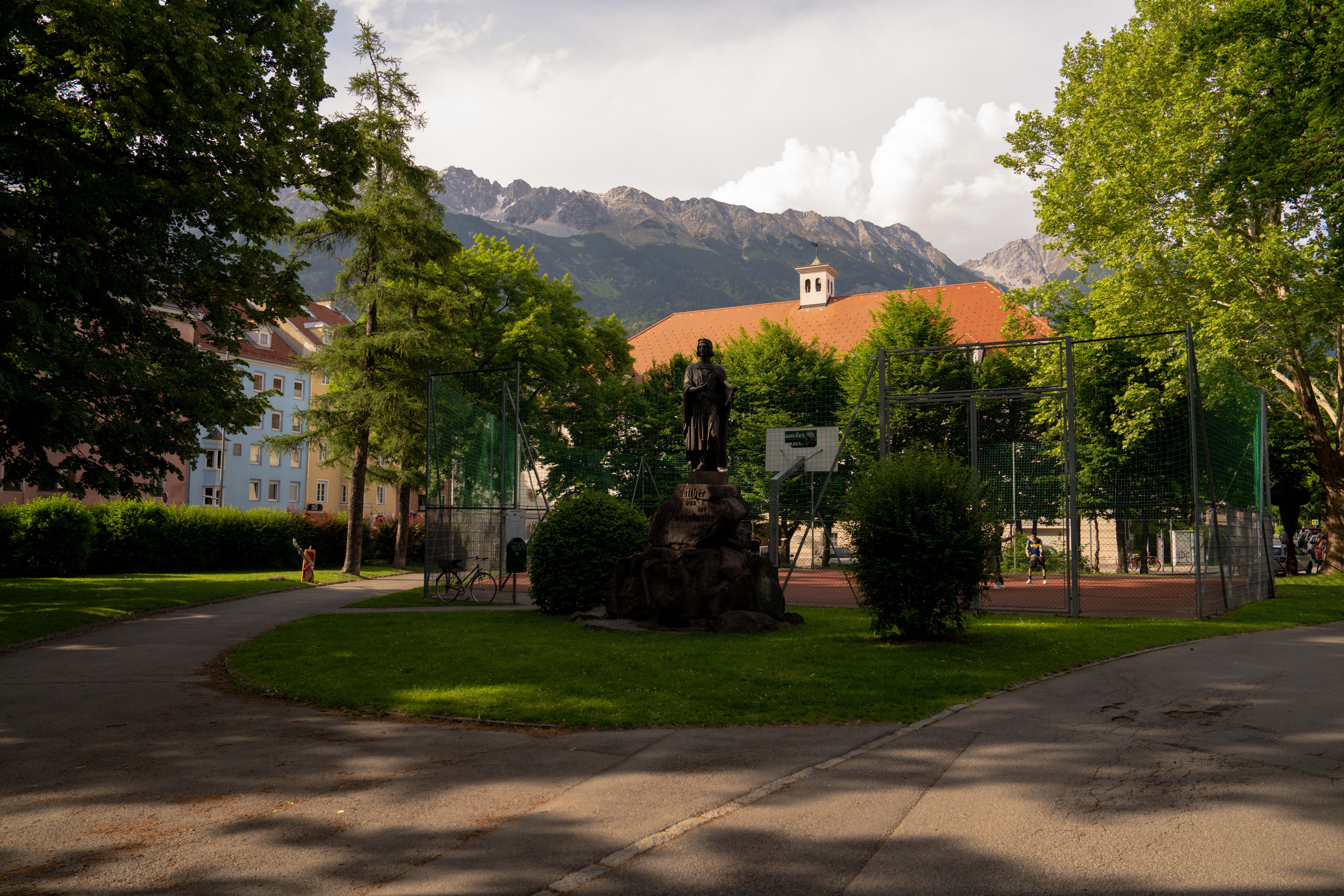
There is also a small viewing platform on the banks of the Inn: the so-called "Dürerblick". Art historians believe that Albrecht Dürer sketched the first coloured view of Innsbruck at this exact spot in 1494. The original hangs in the Albertina in Vienna and a copy is embedded in the left pillar of the platform.
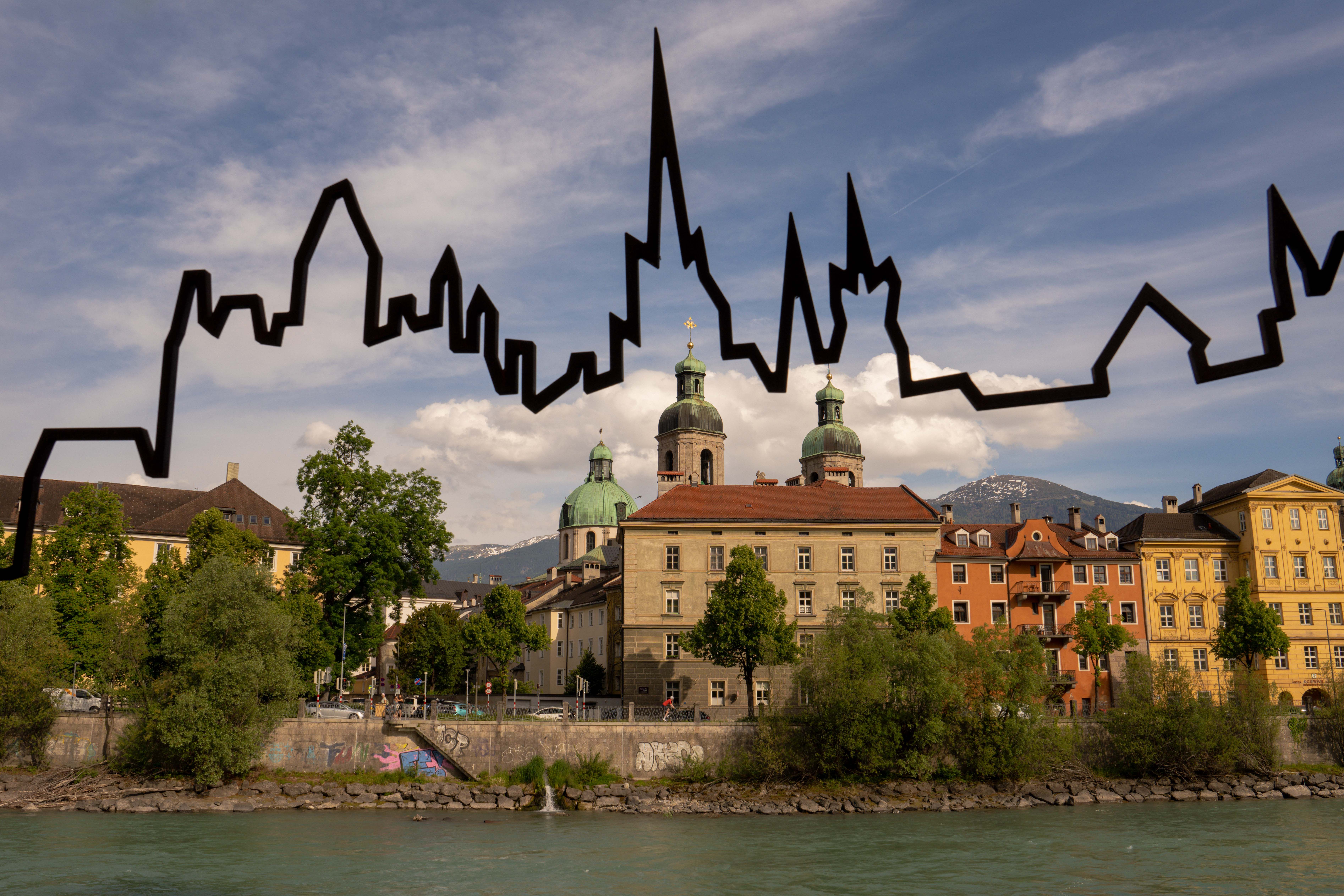
Behind Waltherpark, Innstraße invites you to immerse yourself in the nostalgic ambience of St. Nikolaus. Listed facades offer picturesque photo opportunities, while owner-managed shops invite you to browse. A cold beer is best enjoyed in the Bier-Krügerla traditional pub that is particularly popular with locals. For special souvenirs, it's worth making a detour to Seifen WaldeInnsbruck's oldest soap factory (founded in 1777). On Saturday mornings, the farmers' market on Hans-Brenner-Platz provides visitors with regional specialities. In December, it smells of mulled wine and Kiachl at the rustic and atmospheric Christmas market.
This is one of the slogans of the city of Innsbruck. After a tour through St. Nikolaus, shady trees, benches and views along both banks of the Inn invite you to linger. The ideal starting point for a walk is the market square by the Inn Bridge, where small bars and restaurants line up - perfect for a refreshment in between. While students in particular like to meet here for a relaxed get-together, the backdrop of the colourful row of Mariahilf houses offers one of the best Instagram spots in the city. Just a few steps away, the market hall beckons with restaurants, cafés and fresh specialities.
The afternoon can be enjoyed perfectly in Innsbruck's bustling main shopping street. Between traditional shops and international brands, you will find everything your heart desires - and a shopping centre with an eventful history: the Tyrol department stores' was founded in 1908 by the Jewish Bauer and Schwarz families. During the Second World War, it was forcibly aryanised and transferred to the German entrepreneur Ferdinand Kraus. After the war, the city of Innsbruck took over the building, which has borne its current name since 1966. In 2010, the British star architect David Chipperfield redesigned the building. The staggered façade openings replicate the historic row of houses on the street, while the light-flooded glass dome inside opens up to the mountain panorama.
Tip: On the second floor, the digital museum of the Experience Tirol offers the opportunity to experience Tyrol's history and culture in a previously unseen way via interactive cinema and virtual reality.
A short detour through Fuggergasse leads from Maria-Theresien-Straße to Landhausplatz - ideal for a stopover with coffee and waffles at the Breakfast Club. The square was last modernised in 2008. Today, it is mainly the city's skater scene that meets here around the 36 newly planted trees (one for each member of parliament, as Innsbruckers say with a wink). The striking Landhaus in the east of the square, built in 1938 as the "Gauhaus", is architecturally reminiscent of the Reichstag in Berlin. But if you look closely, you will recognise that the façade is not straight, but gently curved (an allusion to the wings of the Tyrolean eagle).
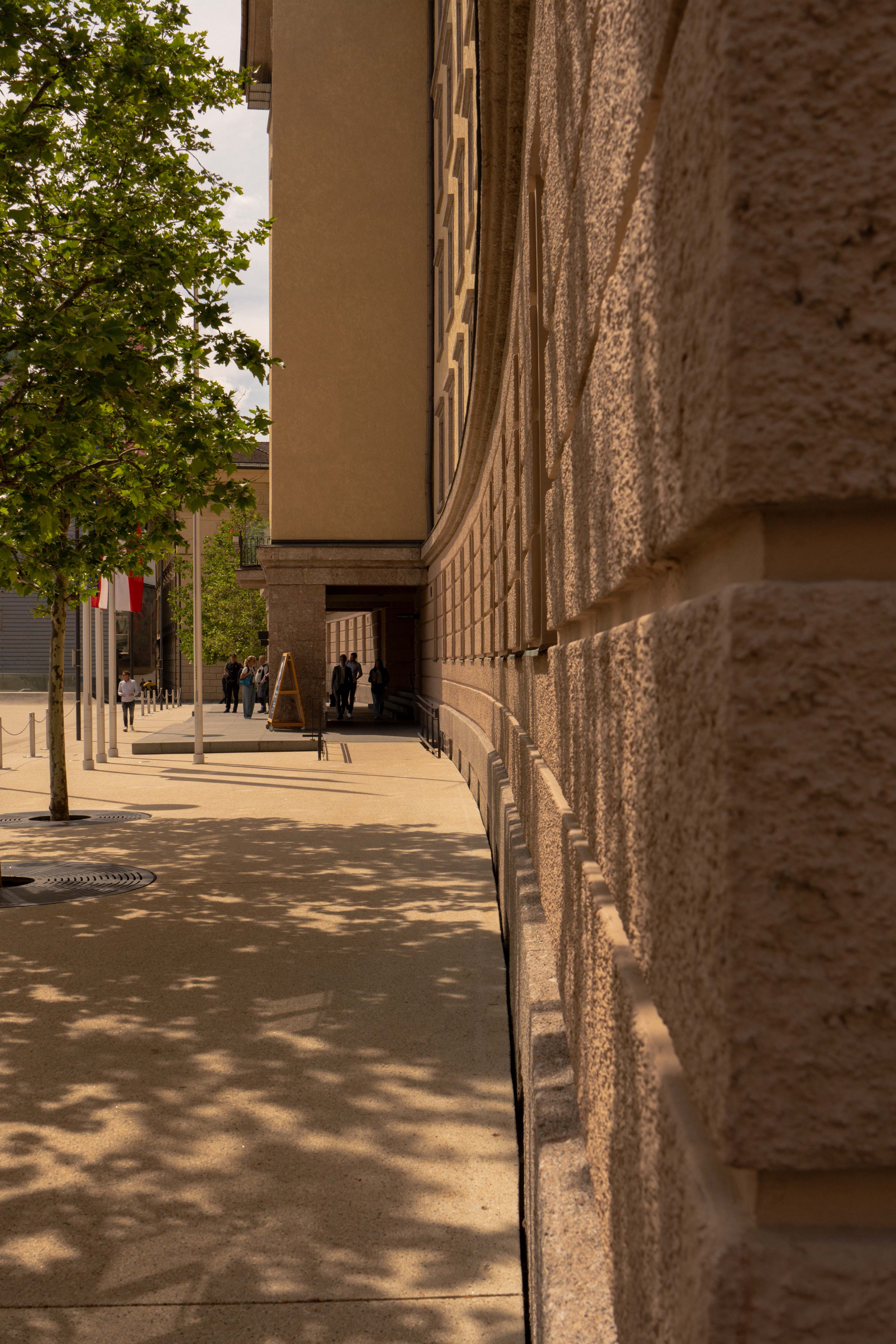
The eagle is also majestically enthroned on the Liberation Monument in the centre of the square, which the French occupying forces erected in 1948 in memory of Innsbruck's fallen soldiers. The white marble gateway has five openings, whose wrought-iron grilles are symbolically permanently open. Other monuments such as the pogrom memorial, the unification fountain and the Maultasch plinth are scattered along the long sides of the square.
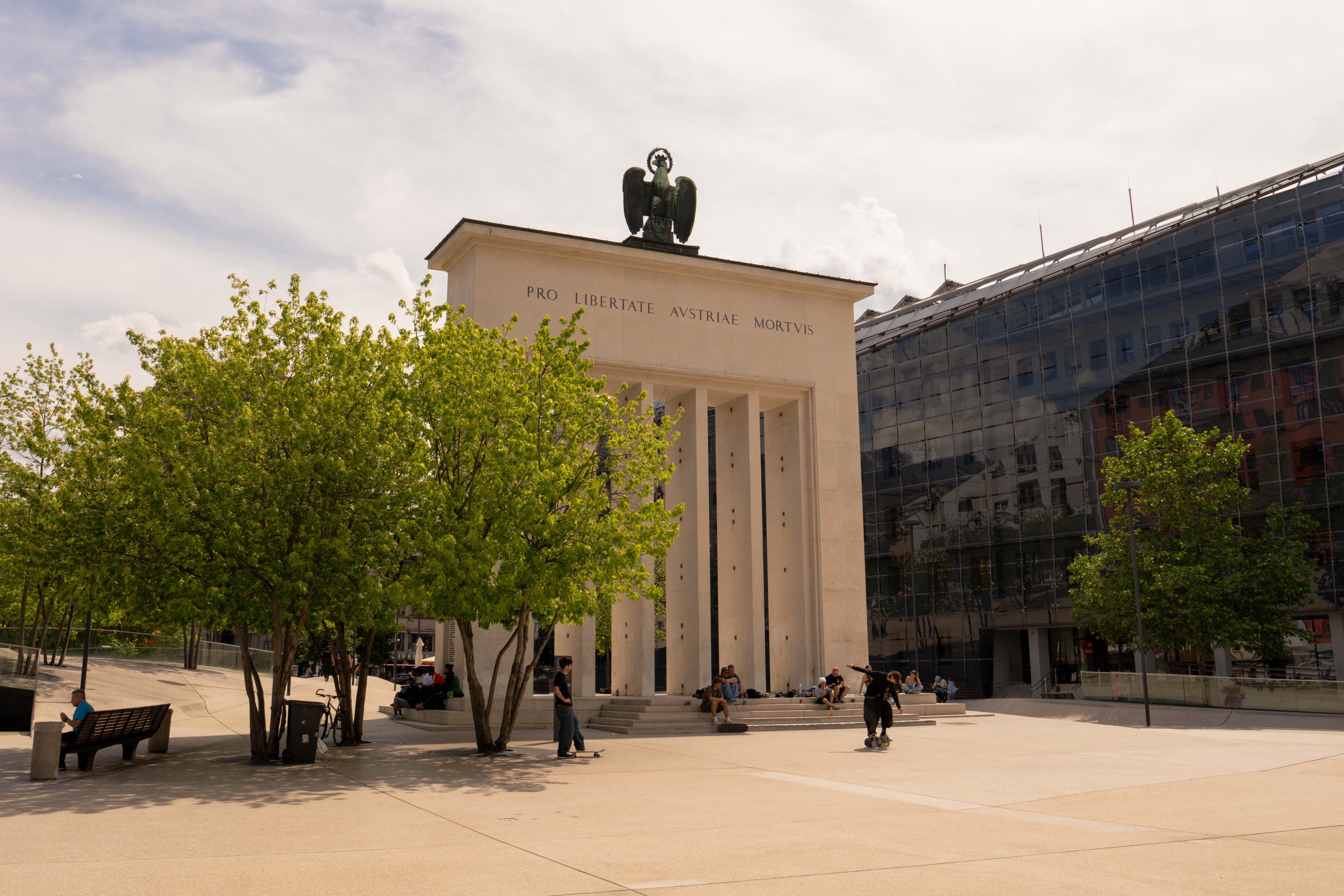
At the southern end of Maria Theresa Street stands the Triumphal Arch, erected in 1765 for the wedding of Archduke Leopold - son of Maria Theresa - to the Spanish Princess Maria Ludovica. Originally only intended as a festively decorated wooden arch, the empress had the structure built in stone after her husband Franz Stephan died unexpectedly during the celebrations. Today, the fresco on the north side commemorates his death, the one on the south side the wedding. The ashlars of the gate originate from the former suburban gate.
Wilten, once a Roman military station (Veldidena) and incorporated into Innsbruck in 1904, begins behind the Triumphal Gate. The district welcomes its visitors with a charming café culture - for example in the Kater Noster, karaffu, Heublumeor in the WILTENwhere you can enjoy brunch in the morning and cocktails in the afternoon. Wilten is also home to numerous lovingly designed shops and small art galleries.
The centre of the district is Wiltener Platzl, a place with a Mediterranean flair. A Christmas market with exhibitors from Wilten takes place here in winter and open-air life in summer. Recommended: the culture café Le Murge located in a pretty Biedermeier house, the romantic bookshop Daffodils in Leopoldstraße 36 and, if you're hungry afterwards, the vegetarian-vegan restaurant Olive right next door.
Tip: If you are also looking for a special vegetarian or vegan culinary experience in Innsbruck, the One Green Table in Pradl is just the place for you. Here, all guests dine at a single large table. A daily changing, creative 5-course menu (always organic, regional and seasonal) is served.
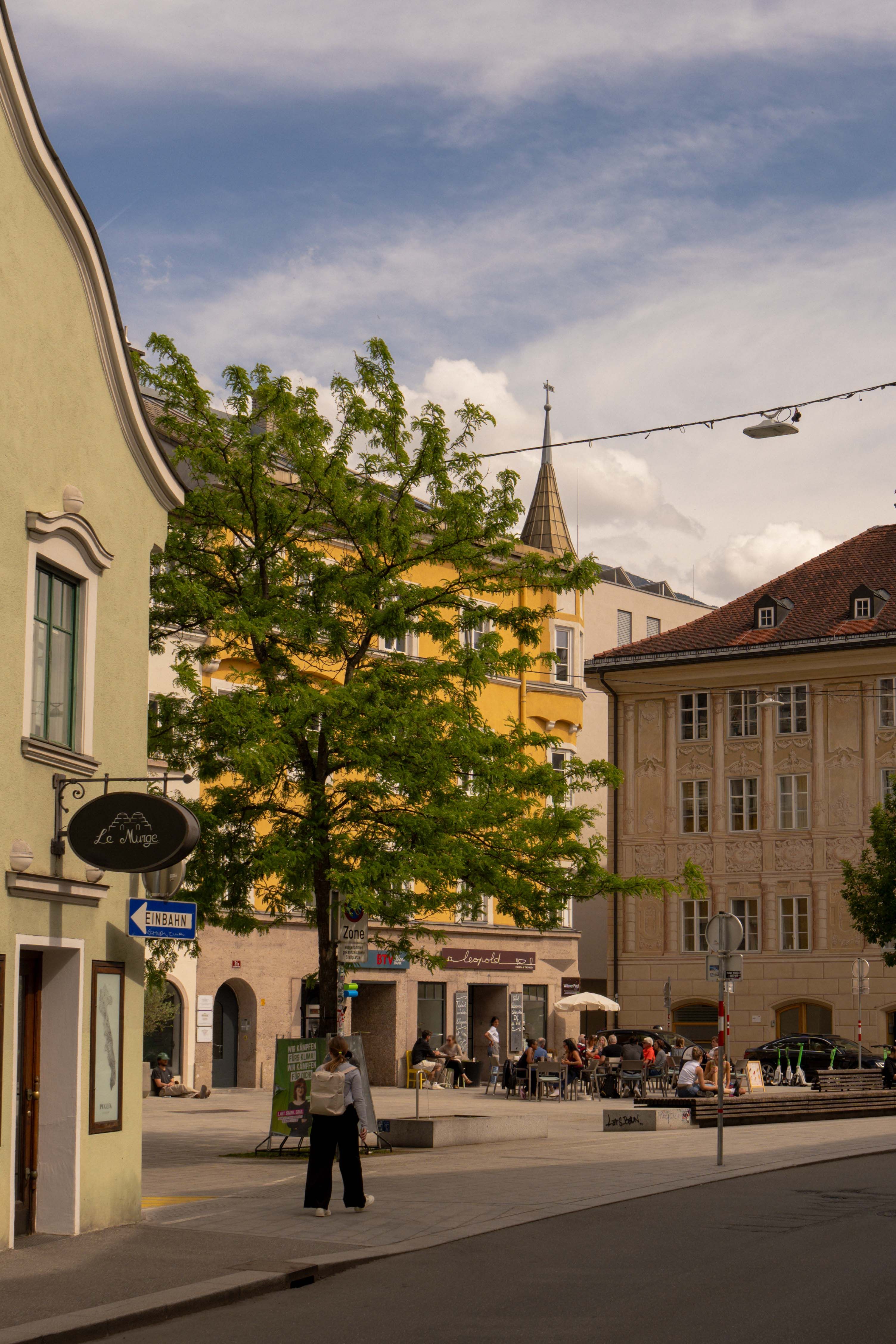
If you're out and about in Wilten anyway - for example at the basilica, the Gasthaus Bierstindl or the Bergisel ski jump designed by Zaha Hadid - have the opportunity to spontaneously hop on tram line 6. For more than 100 years, the so-called Waldbahn has been winding its way leisurely out of the city towards Igls. Along the way, it stops at Ambras Castle, the mystical Celtic tree circle in Tantegert and the idyllic Lanser See lake. From the terminus in Igls, you can then take bus line J to the other side of the valley up to Hungerburg.